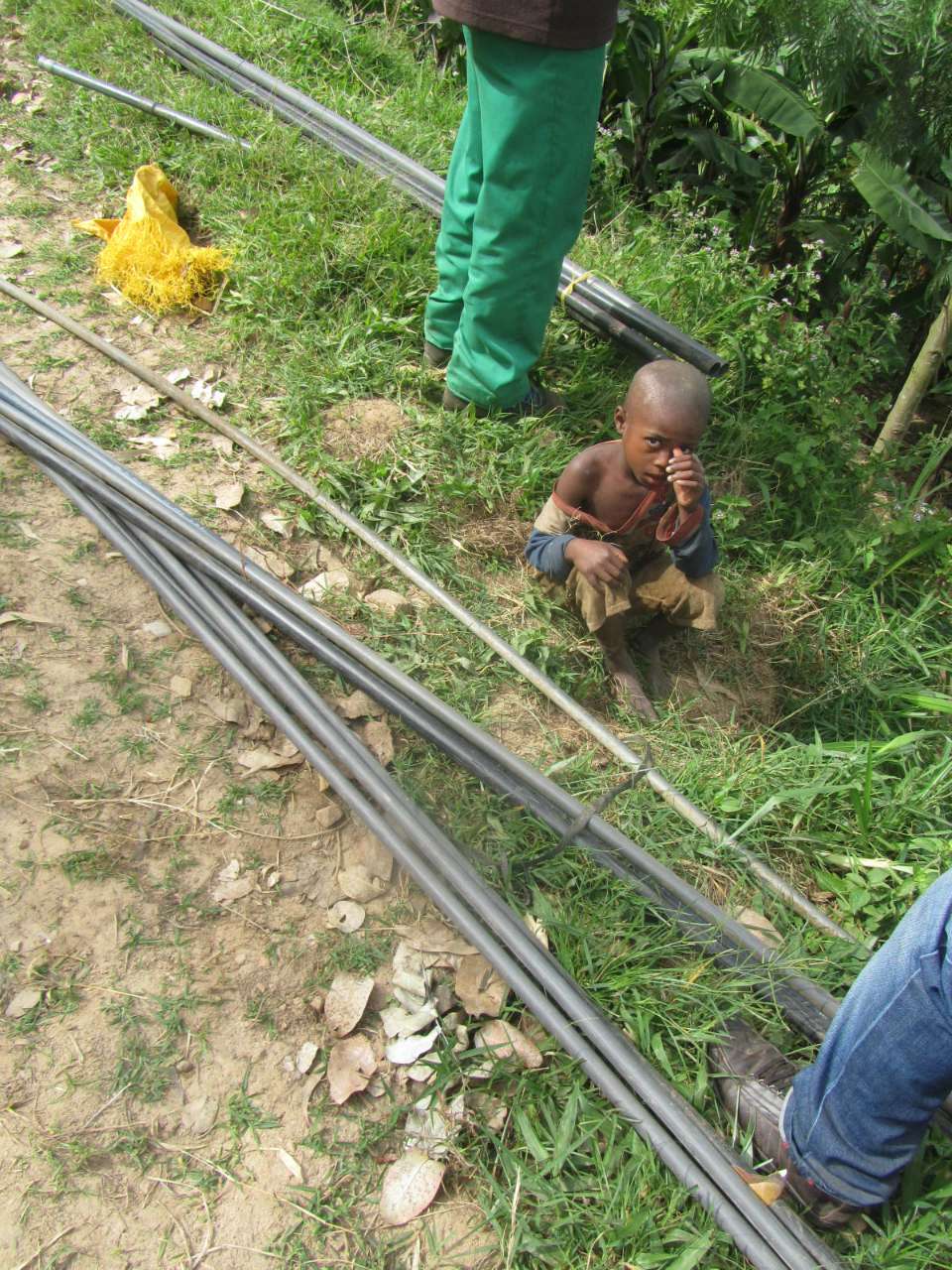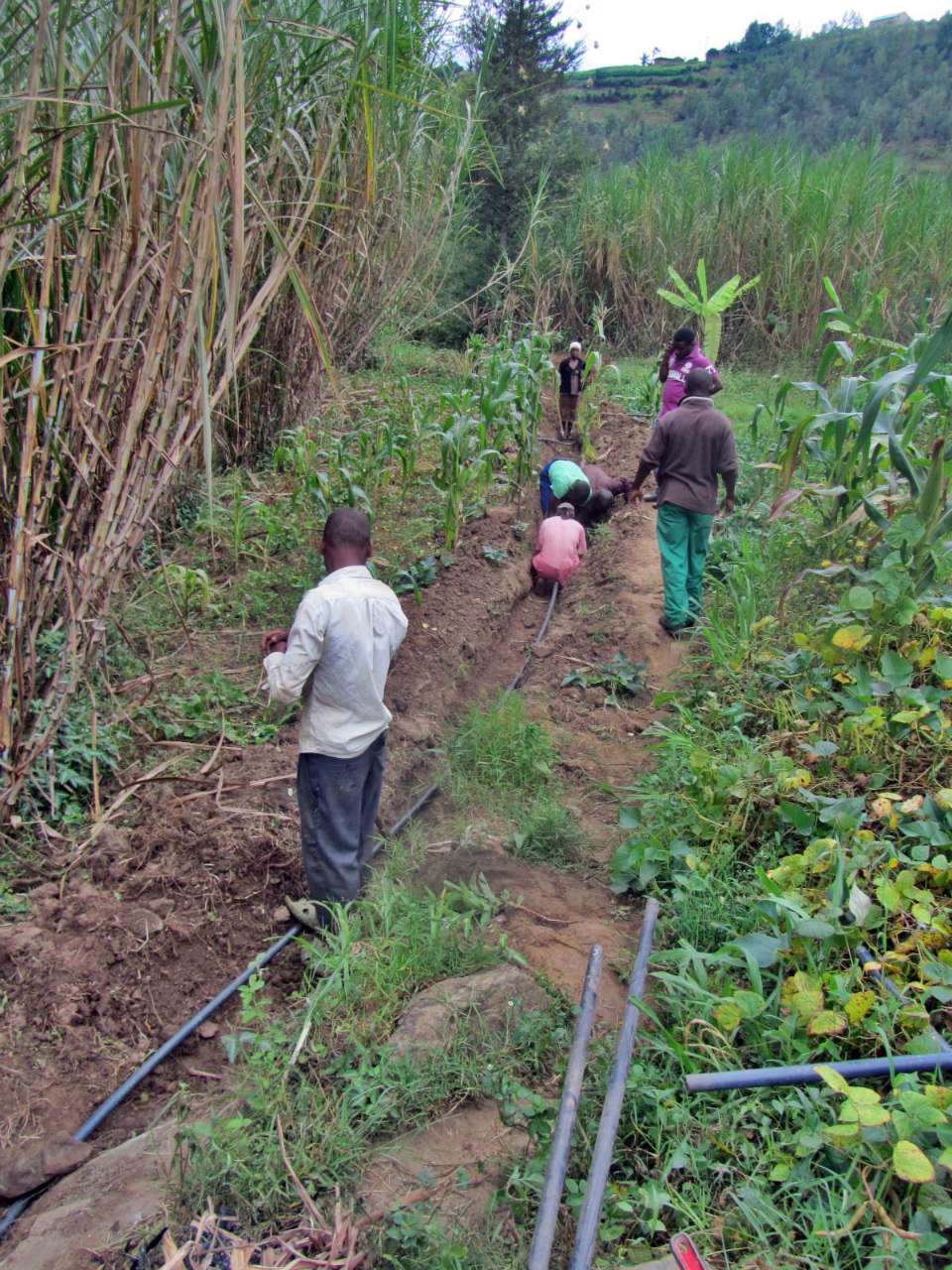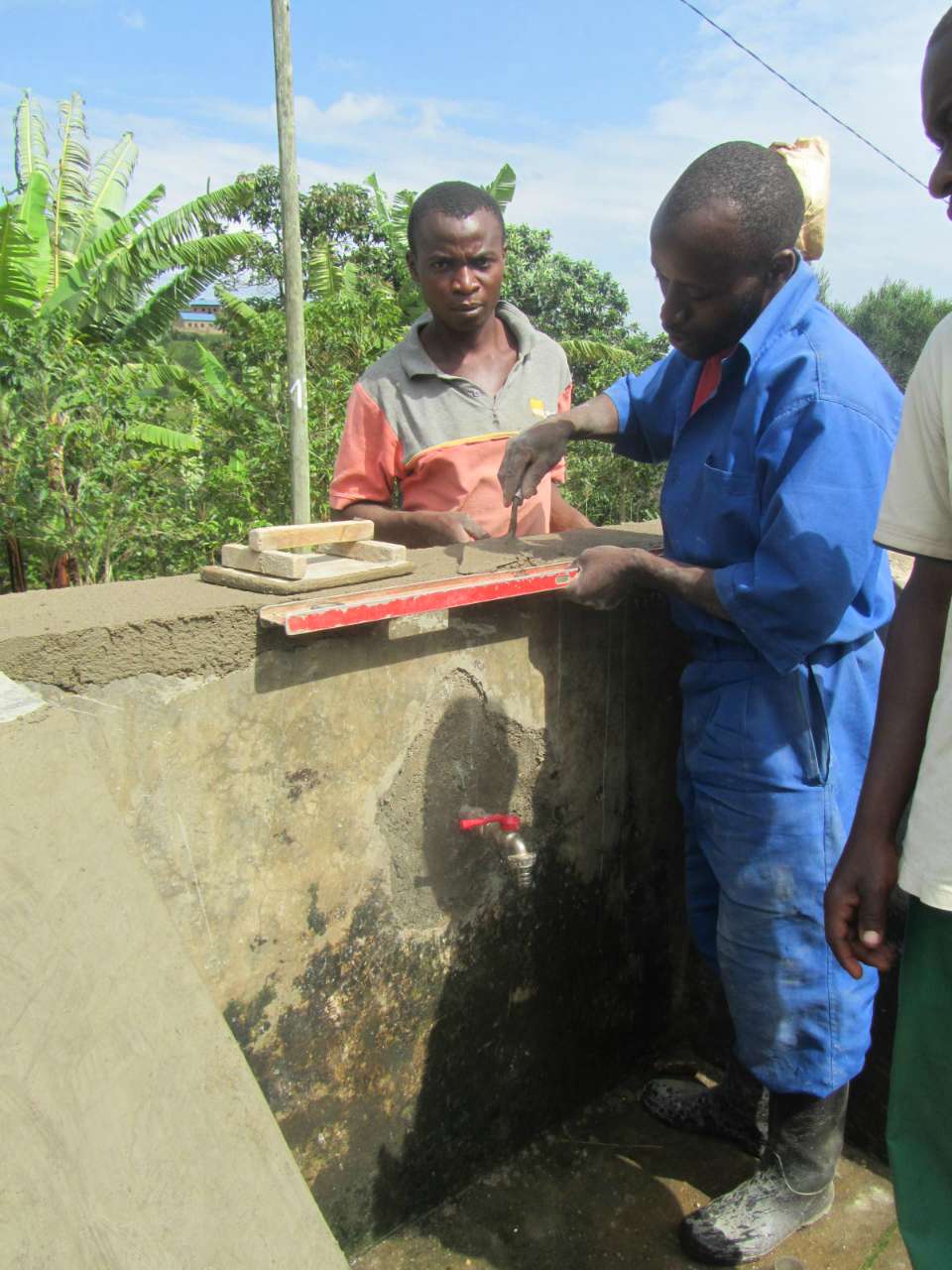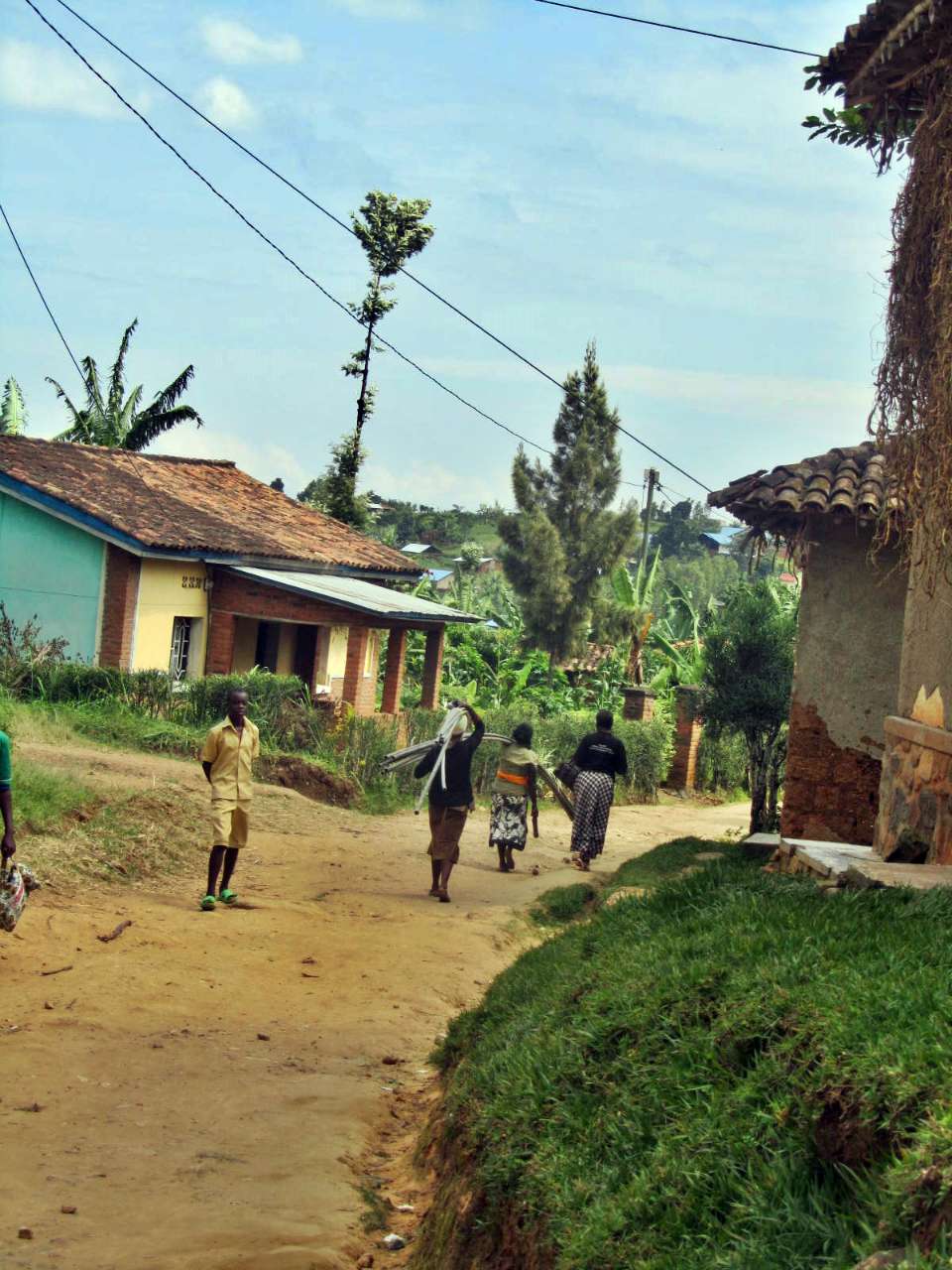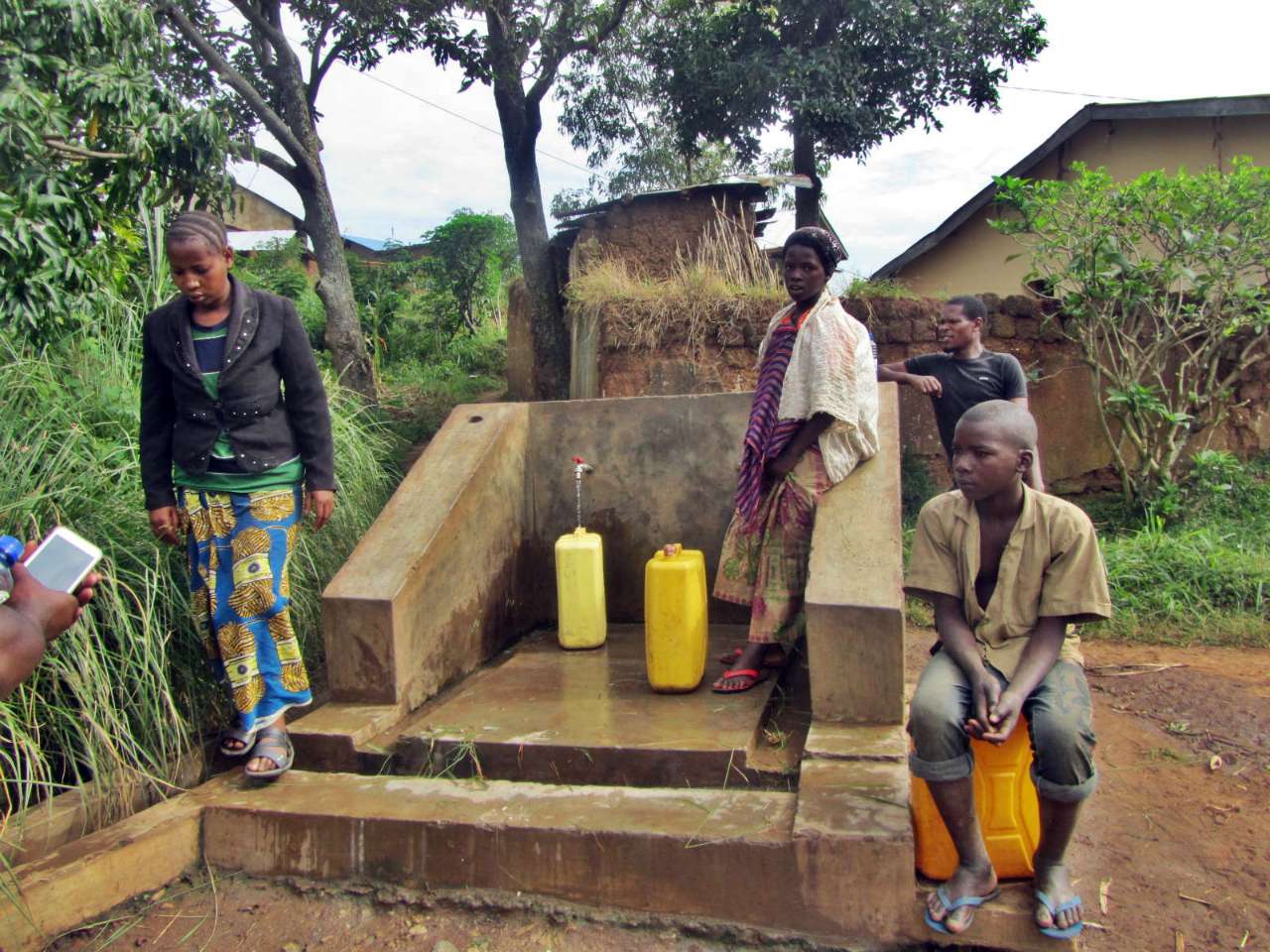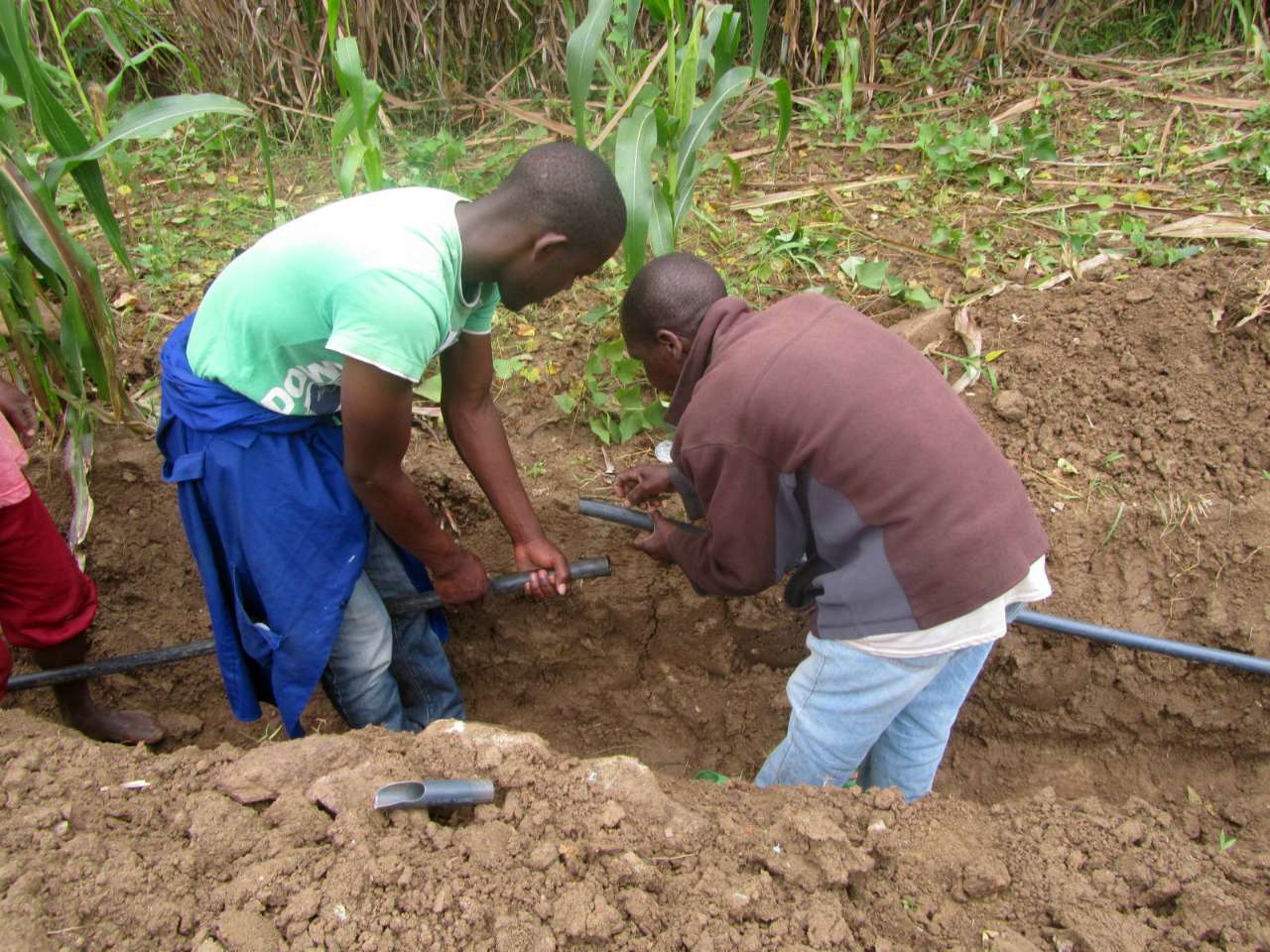This project has been completed under the direction of Peace Corps Volunteer April Zachary.
To read about the beginning of the project, CLICK HERE.
The following is a summary of April’s conclusion report:
My Story
This water project is Phase 2 of a two-part project. The first project, Bubazi Water Project 1: Gakoma Source, was completed in March 2016. The Gakoma Source project brought access to quality water to over 3,000 people and 6 villages.We implemented Bubazi Water Project 2: Gatugunguru Source on May 3, 2016. It was completed on June 8, 2016. The completion of project 2 brought access to quality water to 7 villages, a primary school, a secondary school and to approximately 4,000 people.
The successful and quick completion of Project 2 was possible due to the passion and commitment of Bubazi Health Center Titulier, Anastase Ntezimana, the professionalism, experience and organization skills of Engineer Claude Kalisa, the hard work of the crew supervisors and the community members who donated their time for much of the labor.
Also this project could not have been completed without funding from Water Charity nor without the support of our Peace Corps Rwanda Grant Coordinator, Rhoda Kanyesigye.
This has been a team effort every step of the way!
Goals Achieved
The primary goal of providing access to quality water to the seven villages located in Bubazi cell was met. In addition, quality water access has been provided to both the Bubazi Primary and Secondary Schools. The water catchment system for Gatugunguru Source was rebuilt as well as all distribution lines from Gatugunguru Source to all seven villages and the two schools of Bubazi Cell. In addition, 24 water fountains (water fetching stations) were repaired providing access to quality water to approximately 4,500 people. This supports the goal of the First 1,000 Days program by making quality water accessible to pregnant women and mothers within a 5-30-minute walk from their homes.This project was highly visible to the community, directly impacting the village people in a positive way. As we walked to the remote villages, to see the work being accomplished, the village people would stop us to thank us for bringing water to their villages. Quite often there was a feeling of celebration as the people would raise their arms in victory and shouted and danced. There was a feeling of rejoicing and pride as community members participated in the repair of their water distribution system by carrying materials to site work, digging trenches and back-filling trenches after water lines were repaired. This was a project that lifted ones heart up as its implementation was seen.
Capacity and Skills Built
The people of Bubazi were active participants in this project. Through participation and observation, the community has learned about where their quality water comes from. They also have learned that effort is required in order to keep their water system secure. They now have the ability to compare walking up to an hour in order to fetch water from a muddy river to now being able to walk a short distance to one of several fountains in their village to fetch clear, quality water.Sustainability
The Bubazi Health Center is in the process of developing a system of maintaining the water distribution system and creating Water Security Committees within each of the seven villages of Bubazi.1. Each March, when the Health Center’s budget is planned, the health center will request funds for the year’s maintenance/repair of the water distribution system.
2. The health center will create a contract with a local plumber who will work for them on an on-call-basis for any repairs or maintenance needed for the system
3. The Executive Secretary of Bubazi Cell and the Bubazi Health Center Titulier will require each Village to create a Village Water Security Committee (VWSC). The committee will have a minimum of 3 people (more if possible) who will be responsible for the Water Security in their villages. They will provide quarterly Water Security Awareness Training to the peoples of their village. The training will have the purpose of inspiring the community to take ownership of the water distribution system and to participate in keeping it secure and strong.
We are grateful to April for completing this excellent project.
